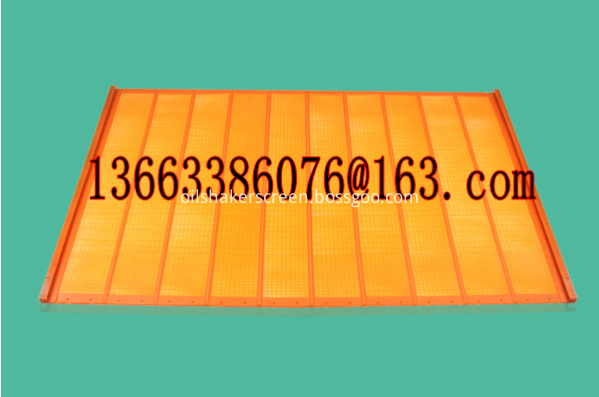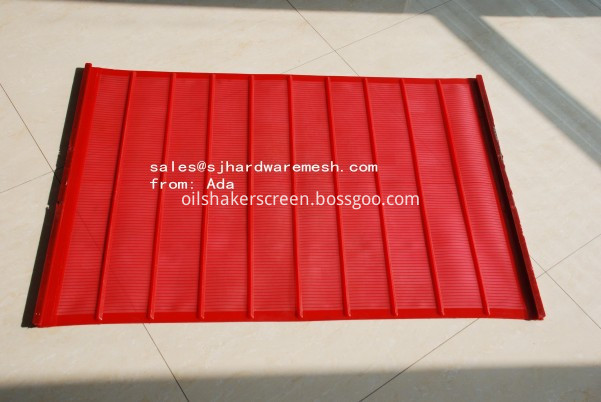1 The principle of silage
The principle of silage is to achieve the purpose of preserving feed by anaerobic fermentation under an appropriate condition to produce an acidic environment and inhibit the reproduction of harmful microorganisms. In order to satisfy the fermentation of lactic acid bacteria, in addition to conditions such as anaerobic and moisture, a certain amount of soluble sugar (8% to 10% of the dry matter of the feed) is required. Therefore, raw materials containing more sugar, such as corn stover and grass, are easy to silage, and vice versa, such as straw, wheat straw, etc., are difficult to silage successfully. For straw, wheat straw, etc., soluble sugar can be added for silage.
Silage feedstocks are widely sourced, and general grass crops, legume crops, roots, tubers, and aquatic feed and leaves can be used for silage. The most commonly used silage material is corn (with ear) for silage, followed by corn stover, sorghum straw and sweet potato vine after removal of the ear.
2 Silage equipment
a. Silage combine harvester includes a traction silage harvester and a self-propelled silage harvester (supporting a high stalk, a dwarf header and a picking table).
b. Silage transportation equipment can be divided into simple transport trailers and parallel dump trucks.
c. Storage equipment Storage tower storage equipment includes green feeding and towing machines, compactors and feeders; plastic bag storage methods include bagging machines and feeders.
3 General silage preparation method
3.1 Silage method
a. The silage tower of the silage tower is mostly a brick cylinder with a diameter of several meters and a height of one or twenty meters. Silage towers are fed with a hair dryer, and there are also special machinery for reclaiming materials. The one-time investment is higher.
b. Silage is round or rectangular, with a rectangular shape. The permanent silage is made of concrete, and the semi-permanent silo is just a pit. The construction site should choose a place with low groundwater level, easy drying and drainage.
c. Silage silo silo is a long strip-shaped trench with a certain slope at both ends of the trench, and the bottom of the trench and the walls on both sides are concretely laid. Silos are more convenient for large-scale mechanization.
d. Silage piles are selected from a dry, flat floor, covered with plastic sheets, and then the silage is discharged onto a plastic sheet and piled up. After the silage pile is compacted, it is covered with a plastic sheet and pressed with sand. The top of the plastic cloth is pressed with old tires or sandbags to prevent the plastic sheet from being blown open by the wind.
e. Silage bags are simple to store, flexible in storage and convenient for feeding. When using it, it should be noted that the thickness of the plastic sheet is above 0.12 mm; recycled plastic cannot be used;
f. Grass bale silage is mainly used for pasture silage. The method is to harvest fresh grass and compress it into a large round bale, put it into a plastic bag and fasten the bag to make a high quality silage.
3.2 Water content of raw materials
Silage raw materials can only ensure good fermentation and reduce dry matter loss and nutrient loss only at the appropriate moisture content. The water content is preferably from 50% to 70%, and the optimum is 65%. It is usually possible to make a rough decision using a relatively simple method: grab a sample of the cut and chopped silage crop, tighten it in your hand for 1 min, then loosen it. If you can squeeze the juice, the moisture content must be greater than 75. %; grass ball can maintain its shape but no juice, the water content is 70% ~ 75%; grass ball is elastic and slowly spread, the water content is 55% ~ 65%; grass ball immediately spread, water The rate is about 55%; if the grass has begun to break, the moisture content is below 55%.
Silage can be divided into high-moisture silage, wilt silage and semi-dry silage according to the high moisture content of its raw materials. 1 High moisture silage, silage material moisture content is above 70%, generally silage directly harvested and stored. 2 Withered silage, the moisture content of silage raw materials is 60%-70%. After the cut pasture or forage crops are properly dried in the field, they are picked up, chopped and placed into silage. 3 semi-dry silage, mainly used for pasture (especially leguminous grass), is to cut the grass in the field to dry to a moisture content of 40% to 60%, and then pick up, chopped, compacted storage.
3.3 , compacting and sealing
The ideal chopping length: high watery grass silage 6.5 ~ 25.0 mm; semi-dry grass silage 6.5 mm; corn silage 6.5 ~ 13.0 mm, coarse and hard materials can be shorter, soft material can be slightly longer.
3.4 Silage Additives
In silage, the addition of suitable additives can improve the success rate of silage and the quality of silage. Commonly used silage additives include microorganisms, acids, preservatives and nutritive substances.
a. Ammonia and urea Ammonia and urea are suitable for cereal crops such as silage corn and sorghum. After addition, the crude protein content of the green feed can be increased, the growth of aerobic microorganisms can be inhibited, and the appetite and digestive function of the ruminant livestock are not adversely affected. The amount of urea used in silage is generally 0.3% to 0.5% of the mass of silage.
b. Formic acid is a good organic acid protectant, which can inhibit the activity of Bacillus and Gram-positive bacteria and reduce feed nutrient loss. The silage made by adding 1% to 2% of formic acid has a bright green color and a strong aroma, and the daily weight gain of the cows and calves can be significantly improved.
c. Dilute sulfuric acid, hydrochloric acid added with dilute sulfuric acid, hydrochloric acid, a mixture of two acids, can quickly kill the bacteria in the silage, reduce the pH value of the silage; can make the silage soft, in order to facilitate the digestion and absorption of livestock; The silage is quickly sinked, easy to compact, and increased in storage; the silage can quickly stop breathing, thereby increasing the silage success rate. Addition method: prepare the stock solution with 92 parts of 30% hydrochloric acid and 8 parts of 40% sulfuric acid. When using, dilute the stock solution with water in a ratio of 1:4, and add 50-60 kg of diluent per ton of silage.
d. Formaldehyde formaldehyde can inhibit the activity of various microorganisms during silage. After the addition of formaldehyde to the silage, there was little activity of spoilage bacteria in the fermentation process, and the amount of ammonia nitrogen and total lactic acid in the silage decreased significantly. The amount of formaldehyde used is generally 0.7% of the mass of the silage. This additive is most suitable for stems and leaves of young plants with high water content in silage.
e. Salt For silage with low water content, coarse texture and difficult to seep out of cell liquid, the addition of salt can promote the exudation of cell liquid, which is beneficial to the fermentation of lactic acid bacteria. Adding salt can also destroy certain toxins and improve the palatability of the feed. The amount of salt added is 0.3% to 0.5% of the mass of the silage.
f. Living dry bacteria added live dried bacteria to treat straw, which can enzymatically dissolve lignin and fiber in straw, make straw soft, pH value decreases, harmful bacteria activity is inhibited, sugar and organic acid content increase, thereby increasing digestibility . The dosage is 3 g of live dried bacteria per ton of straw. Before treatment, pour 3 g of dried bacteria into 2 kg of water and dissolve thoroughly. Place at room temperature for 1 to 2 hours, then pour it into 0.8%-1.0% saline and mix well. Spray the bacteria evenly during micro-storage. On the straw, it will be treated as usual.
3.5 Silage Quality Assessment
a. High quality silage is very close to the original color of the crop. If the pre-silage crop is green, it is still green or yellow-green after silage.
b. Silage with excellent odor quality usually has a slight sour and fruity aroma, similar to the freshly cut bread and cigarette flavor (due to the presence of lactic acid).
c. The structure of the structural plants (stems, leaves, etc.) should be clearly identifiable. Structural damage and stickiness are signs of severe silage in silage.
3.6 Factors Quality of Silage
The moisture content, sugar content and sealing degree of silage raw materials can affect the quality of silage. Even if the same raw material, the harvesting period is different, the nutrient content is different, resulting in different quality of silage.
4 silage feeding method
4.1
Silage can be eaten after 40 to 60 days of sealing. The opening time is more suitable for the lower temperature and the grass-free season. The cover soil at the time of sealing should be removed before opening to prevent mixing with silage. It is required to open the section in sections, from top to bottom, layering grass, not fully open, anti-exposure, rain, and freezing. It is strictly forbidden to take grass in the hole and seal it after taking the grass. Attention should be paid to drainage and the quality of silage is identified. If the quality is normal, there will be wine and sour taste, yellow and green color, which can be fed; if it is spoiled, it will smell bad, the texture is dry, loose or sticking into pieces, so don't feed it to prevent poisoning. When taking the material, if the feeding interval is long in the middle, the silage must be covered and sealed according to the original sealing method, which is airtight and does not leak.
4.2 Feeding
Silage is a high-quality succulent feed. After short-term training, all livestock are fond of eating. For individual livestock training methods, the silage can be fed first on an empty stomach, initially feeding less, gradually increasing, and then feeding the forage; or feeding the silage and the concentrate first, then feeding the other feed; or silage Mix the ingredients with the forage while feeding.
Polyurethane Screen Mesh absorbs the advantages of polyurethane. It is characterized by strong corrosion resistance, good wear resistance, low operating noise and high screening efficiency. Polyurethane screens have good flexibility, it can be freely combined with vibrating screens and other mining equipment. This product is fit for various areas, such as mines, refineries and quarries.
Specification
- Screen material: polyurethane (PU).
- Hole shape: round, square, rectangular. (or upon request).
- Types: polyurethane fine screen mesh, tensioned polyurethane screen, modular polyurethane screen, steel core polyurethane screen.
- Size: customized design.
- Color: red, yellow, green, etc.
Advantage
- Good elasticity; high tensile strength.
- Light weight; low operating noise.
- Strong structure; good impact resistance.
- Strong corrosion resistance; excellent wear resistance.
- Good bearing strength; high screening efficiency.
- Stable performance; long-term stability.
- Maintenance free; economical.
Application
- Used in mines and quarries.
- Used to sieving oil, coal, ore, gravel and sand, etc.
- Widely applied in mining industry, chemical industry, power industry and construction industry.


Polyurethane Screen Mesh
Polyurethane Screen Mesh,Stainless Steel Mesh ,Metal Mesh Screen ,Stainless Steel Screen
Anping Shengjia Hardware Mesh Co.,ltd , http://www.oilshakerscreen.com